How to Care for a Pet Syrian Hamster
The Syrian hamster, also known as the golden hamster, is among the most popular choices for small pets. They're generally easy to tame, fun to watch, and fairly low-maintenance, making them a good pet for beginners.
Thanks to their popularity as pets, diets specially formulated for Syrian hamsters can be found in most pet stores. Plus, their housing doesn't take up that much space and is pretty simple to set up and maintain.
Learn more about the Syrian hamster and what they need to stay happy and healthy.
Species Overview
Common Names: Syrian hamster, golden hamster
Scientific Name: Mesocricetus auratus
Adult Size: 5 to 9 inches long, weighing roughly 5 ounces
Lifespan: 2 to 4 years
Syrian Hamster Behavior and Temperament
Syrian hamsters are nocturnal, so they sleep during the day and are active at night. And while they are generally quiet pets, their nighttime activity might keep you awake if you have their enclosure in your bedroom.
Certain hamsters can somewhat adapt to their humans’ schedule, but you should never try to pick up a sleeping hamster. Some hamsters might bite when startled or handled improperly. Thus, the early morning or evening hours are a good time to interact with your hamster. And as long as you don't squeeze or jostle your hamster as you hold them, they should learn to be content with people handling them.
Also, because hamsters have weak eyes, they use their whiskers to make sense of their environment. They can develop eye problems, too, so it’s important to check on your hamster often to ensure they’re healthy.
These hamsters are one of the most solitary animals in the wild, making them equally territorial. That means they should always be housed alone as pets. Sometimes young hamsters tolerate cage mates for a little while. But as they mature, there's a good chance they'll become aggressive, even fighting to the death. It's also best to keep any other household pets away from your hamster, as they could hurt each other.
As pets, Syrian hamsters don't necessarily form a close bond with their humans. But they often will come up to the side of their enclosure if you're there, and many will enjoy lounging in your hands or on your shoulder. Expect to spend a few hours per week on feedings and maintaining your hamster's habitat. After that, just make sure you're allotting some time each day to handle your hamster to keep them tame.
Size Information
Syrian hamsters reach around 5 to 9 inches long on average, and they weigh roughly 5 ounces. They'll reach maturity within two months.
Housing
As large of an enclosure as you can accommodate for a Syrian hamster is best, as this will be their primary space for exercise. At a minimum, the cage should be 1 foot by 2 feet and at least 1 foot tall.
The two general cage options are one that has wire on top with a plastic base, or a standard glass or plastic aquarium with a tightly fitting mesh top. The wire cages allow for better airflow, though they offer less protection against drafts. Solid walls can block air circulation, leading to a buildup of irritating and harmful fumes from the hamster’s droppings.
When shopping for a wire cage, ensure that the spacing between the bars isn’t large enough to make it easy for a hamster to escape, or get hurt while attempting to squeeze between them. Look for bars that are spaced 1/2 inch or less apart. A plastic base on a wire cage will also prevent sores on your hamster’s feet.
Your hamster should be comfortable throughout the year, regardless of the season. It’s best to ensure their environment is 75 to 85 F.
In the enclosure, include:
- Plenty of hamster toys for enrichment
- An exercise wheel that has a solid surface (not bars) to minimize the risk of injuries
- Tunnels and bridges for hiding and climbing
- Wooden chew blocks for dental hygiene
- Nest or sleeping hut (pet shops typically have several options) in a corner of the enclosure
Specific Substrate Needs
Syrian hamsters need two types of bedding: absorbent substrate and nesting material. Place the absorbent substrate on the bottom of the cage. Then, provide nesting material so your hamster can make a comfortable little bed to burrow into.
Line the bottom of the enclosure with a couple of inches of bedding. Paper or aspen products are recommended. Don’t use cedar or pine bedding, as the strong smell can be harmful to a hamster.
How to Clean a Syrian Hamster’s Cage
Scoop out any wet spots in the bedding daily. And change all the bedding weekly as you scrub down the entire enclosure with soap and water.
- Take your hamster out of their cage before cleaning it. You can put them in a separate enclosure or someone else in the family can hold them and interact with them until their cage is clean and ready for them.
- Never use harsh soaps and chemicals, including those with strong fragrances, to clean your hamster’s cage and accessories. Instead, there are cleaners specifically made for these animals, and you can follow the directions on the products’ labels to ensure you use them correctly.
- Rinse the cage and accessories with water before drying everything thoroughly.
- Add new bedding and all of your hamster’s toys and accessories before putting your hamster back in their cage.
What Do Syrian Hamsters Eat & Drink?
Syrian hamsters are nocturnal, so you can set up a feeding schedule to ensure they’ll have enough food from the evening to the morning.
Feed your Syrian hamster a diet of nuts, grains, and seeds (typically what's in the commercial food blends) supplemented with fruits and vegetables, such as apples, broccoli, carrots, cauliflower, and pears.
Because Syrian hamsters are omnivores (they eat plants and animals), offer the occasional hardboiled egg or feeder insect for an extra protein shot. If you use a commercial food blend, the supplemental foods generally shouldn't make up more than 10% of the hamster's overall diet. But consult your veterinarian for the best quantity and variety to feed, as this can vary based on age and size.
Always keep a bowl of dry food in the enclosure, and discard uneaten food after 24 hours. Hamsters typically like to graze, storing food in their cheek pouches and stashing it somewhere for later. Your hamster might even wake up a few times a day to eat and then go back to sleep.
Whenever you're feeding fresh foods, it's often best to offer them in a separate dish in the evening when your hamster is waking up and ready to eat. Remove uneaten fresh food after a few hours so it doesn't spoil.
Moreover, always provide a clean source of water for your hamster that you refresh daily. Many people prefer to use water bottles because they are easy to keep sanitary. But you also can use a shallow dish for water until your hamster learns to drink from the bottle.
Common Health Problems
Syrian hamsters are generally hardy animals. However, there are a few health conditions to watch out for, such as:
- Wet tail: This is a gastrointestinal infection usually associated with stress and bacteria proliferation. It is one of the most common health issues affecting this hamster. Symptoms include lethargy, diarrhea, lack of appetite, and wetness around the tail area. If you suspect an infection, take your hamster to the vet immediately. This issue can have a fatal outcome if allowed to fester, but antibiotics can effectively treat it.
- Mites: Hamsters can contract fur and ear mites, especially from unsanitary conditions. If your hamster has mites, you might notice itching and loss of fur in patches. If so, contact your vet as soon as possible for treatment.
- Overgrown teeth: Some hamsters can develop overgrown teeth that make eating difficult. You might notice your hamster's teeth look a little longer than normal and that they're losing weight. A vet can trim the teeth and then recommend ways to maintain the hamster's dental health, such as adding more chewable materials to the enclosure.
Training Your Syrian Hamster
Hand-taming is the primary training most people do with their hamsters. It's ideal to begin when the hamster is still young, so they learn to be comfortable around people.
Sit on the floor in a secure space when handling your hamster, as even a drop from a few feet can hurt them. Have a soft or padded surface under you and the hamster—if they squirm out of your hand, this can ensure they’ll land on something that won’t cause harm.
It can help to hold a favorite treat to make the hamster's experience sitting in your hands more enjoyable. If they start to get stressed, put them back in their enclosure.
Exercise
Exercise is important to prevent obesity and other health issues. Between having a sufficiently large enclosure to roam about and an exercise wheel, your hamster should be able to remain fit.
You also can put your hamster in an exercise ball when they're out of the enclosure so they can roll safely around your floor. Always monitor your hamster when they're out of the enclosure.
Grooming
Hamsters are fairly clean animals that self-groom. They do not need water for baths. If they do get some dirt or debris stuck in their fur, you can help them get it out by gently rubbing the area with a damp cloth.
Nail and dental care are important. Gently trim their nails regularly so they won’t scratch themselves when grooming—you can ask a veterinarian to show you how. And, as discussed above, giving your hamster a variety of chew toys will help them keep their teeth at the right length.
Upkeep Costs
From month to month, your main costs for a hamster will be for food and bedding. Expect to spend around $20 to $40, depending on the type of bedding (plus the size of enclosure) and diet you choose.
Beyond that, you'll occasionally have to replace chew blocks, nests, and other items in the enclosure. And you should budget for an annual veterinary checkup plus emergency medical costs.
Pros & Cons of Keeping a Syrian Hamster as a Pet
There are a few things to consider before getting a Syrian hamster.
Pros of Syrian Hamsters
- Generally low-maintenance
- Quiet and can be tamed to hold
- Interesting and fun to watch
Cons of Syrian Hamsters
- Fragile and small, so need a gentle touch
- Typically asleep for most of the day
- Nocturnal, so you might not get to see them at their most active
Similar Hamsters to the Syrian Hamster
If you’re interested in pet hamsters, check out:
- Dwarf Hamster
- Winter White Dwarf Hamster
- Chinese Hamster
Otherwise, check out other hamsters that can be your new pet.
Purchasing or Adopting Your Syrian Hamster
You can buy a Syrian hamster from a pet shop, but a reputable breeder or rescue group is the preferred option. Good breeders and rescues tend to provide superior care for their animals, and they should be able to give you thorough information on an animal's origin and health history.
Expect to pay around $20, though this can vary depending on factors such as the animal's age and coloring.
Reproduction/Breeding
A local exotic veterinarian might be able to recommend a good breeder or rescue organization for hamsters. You'll likely be able to find younger animals via a breeder, though small animal rescues often have good variety as well.
When choosing a hamster, it's ideal to observe the seller's animals while they're awake. Ask the seller when the best time to visit them would be. The seller also might be able to wake their hamsters for you to pick one by offering a desirable treat.
A healthy hamster will be active and curious. Their fur should look clean, their droppings should be well-formed, and their eyes should be clear and bright. Red flags include labored breathing and a dirty bottom.
If you'll be taking more than one hamster home, make sure to have separate housing for them ready. This will prevent fighting, and stop you from accidentally becoming a breeder yourself.
- Is a Syrian hamster a good pet?
Syrian hamsters can make good family pets. They're great for older children who are able to handle them gently and carefully.
Are Syrian hamsters friendly?When cared for properly and handled gently, Syrian hamsters can be happy and calm around you. These friendly little animals will enjoy exploring their environment and spending time with you once they trust you.
Are Syrian hamsters hard to take care of?Hamsters are generally low-maintenance pets, with their main needs being daily feedings and regular cage cleanings.
Does the Syrian hamster like to be held?Syrian hamsters can learn to be comfortable with gentle handling. However, they also like to explore and might not want to be held for long.
RECOMMENDED NEWS
 ferrets
ferretsHow to Care for a Pet Ferret
Ferrets are playful pets that are very entertaining to watch. These long, slender animals are smart...
Read More → guinea-pigs
guinea-pigsHairless Guinea Pigs
There are actually two varieties of hairless guinea pigs. The skinny pig, which does actually have ...
Read More → guinea-pigs
guinea-pigsDiarrhea in Guinea Pigs
Diarrhea is a common issue for many different kinds of pets, and guinea pigs are no exception. Soft...
Read More → hamsters
hamstersChoosing a Dwarf Hamster Cage
When choosing a cage for your dwarf hamster, you must consider the size of the cage, if it has prot...
Read More → rabbits
rabbitsCan Domesticated Rabbits Survive in the Wild?
Sometimes well-meaning pet rabbit owners will announce that they have "set a rabbit free ...
Read More → rabbits
rabbits43 Rabbit Breeds to Keep as Pets
There are many different breeds of rabbits, all with different colors, sizes, shapes, and coat type...
Read More → rabbits
rabbitsIdeas for Making a Homemade Rabbit Cage
Rabbit cages can be expensive, and most rabbits need a lot more space than the average store-bought...
Read More → exotic-pets
exotic-petsExotic Pet Names That Start With 'M'
People have slightly varying definitions of what an exotic pet is. But most often exotic pets are c...
Read More → exotic-pets
exotic-pets227 Chicken Names That Are Eggs-traordinarily Funny
Chickens are wonderful pets, and you can show your love to your pet by choosing from the many great...
Read More →


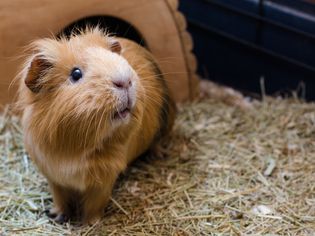


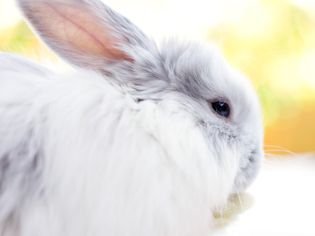
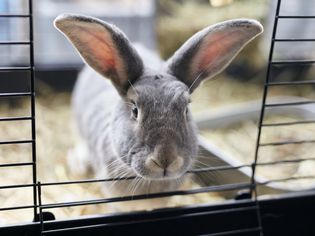
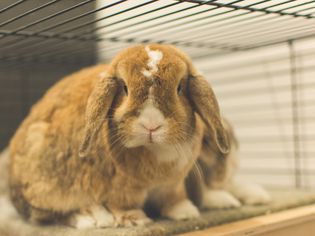
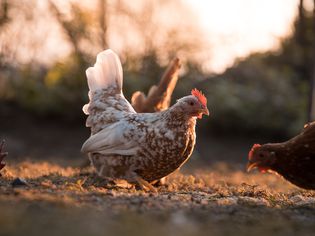
Comments on "How to Care for a Pet Syrian Hamster" :